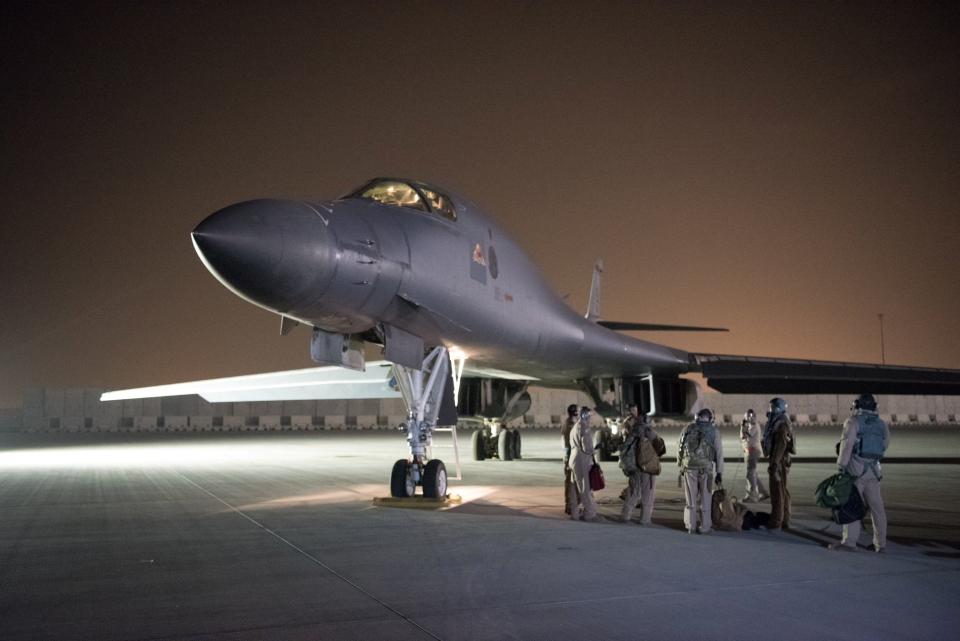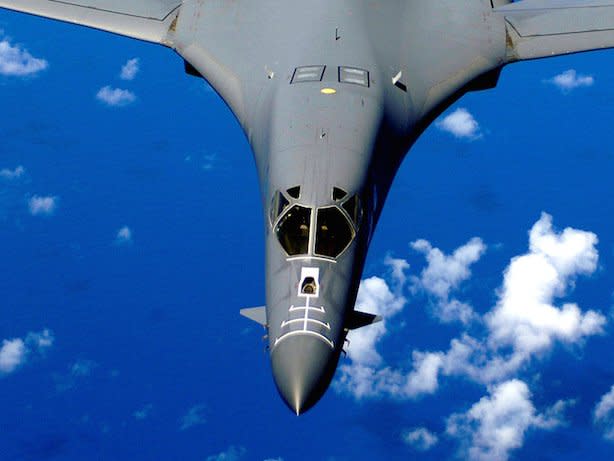Air Force Global Strike Command says B-1 bombers are good to fly, but is still trying to figure out what's wrong with ejection seats

Reuters
Air Force Global Strike Command says a safety stand down for its B-1 bombers will end this week.
The stand down was prompted by a B-1 making an emergency landing in Texas in May.
An investigation is ongoing, but the Air Force says the bombers can return to normal operations.
Air Force Global Strike Command said on Tuesday that its B-1 bombers would return to flight operations this week, after the bomber fleet was ordered to take a safety stand down on June 7.
The command, which oversees the entire Air Force bomber fleet, said at the time that it had found "an issue with ejection seat components" after a B-1 made an emergency landing in Midland, Texas, at the beginning of May.
The command said in a release on Tuesday that the stand-down period "allowed the command time to thoroughly evaluate the egress components and determine potential risks before returning to flight."
"We have high confidence that the fleet’s egress systems are capable and the fleet is ready to return to normal flight operations," Maj. Gen. Thomas Bussiere, the 8th Air Force Commander who oversees the Air Force bomber force, said in the release.

U.S. Air Force/Handout via REUTERS
The incident at Midland on May 1 involved a B-1 bomber from Dyess Air Force Base in Texas experiencing an in-flight emergency that prompted the landing at Midland. First responders were on the runway before the plane landed, and fire crews used foam on the aircraft, though it was not immediately clear what caused the emergency.
Photos that emerged after the incident showed that at least one of the bomber's four cockpit escape hatches had been blown but the ejection seat had not deployed. Each crew member's seat is equipped with a rocket that is supposed to launch the seat out of the plane within seconds of the ejection handle being pulled.
At an event in Washington, DC, on Monday, Air Force Secretary Heather Wilson confirmed that the landing took place after one of the bomber's ejection seats did not deploy.

Staff Sgt. Bennie J. Davis III/USAF/Handout via REUTERS
The plane was being flown by an instructor pilot and "a brand-new crew," Wilson said, according to Military.com, when an indicator light went off to alert them of a fire on board.
"They go through their checklist of everything they're supposed to do. The next thing on the checklist is to eject ... they start the ejection sequence," Wilson said.
"The cover comes off, and nothing else happens," Wilson added, referring to the ejection hatch above the weapons systems officer's seat. "The seat doesn't fire. Within two seconds of knowing that that had happened, the aircraft commander says, 'Cease ejection, we'll try to land.'"
Wilson praised the bomber crew for landing the aircraft while the airmen in the back was at risk of being ejected.
When the command issued the stand-down order on June 7, it said a Safety Investigation Board, which is a panel of experts who investigate incidents and recommend responses, was looking into the emergency at Midland.
The release issued on Tuesday said that investigation was ongoing, though a Global Strike Command would not elaborate on the probe when asked by Air Force Times.
NOW WATCH: America's B-2 stealth bomber is unlike any military aircraft in the world
See Also:

 Yahoo News
Yahoo News 
